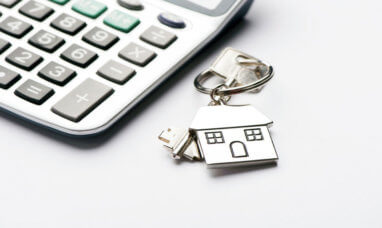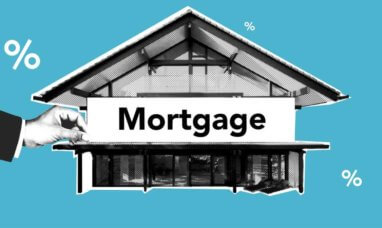Doctors often struggle to qualify for mortgage loans for several key reasons. First, most physicians have significant student debt from medical school. This negatively impacts their credit history. A medical career also takes time to establish, and it can be challenging to offer proof of employment and income while in residency.
However, lenders understand that fewer doctors default on their loans as compared to the general public. So, they create physician mortgage loans that are specifically designed to help physicians achieve their dream of owning a home.
Physician mortgage loans offer tailored financing and refinancing options for medical professionals. Read on to learn about the pros and cons of physician loans.
What Is a Physician Loan?
A physician loan is a mortgage program tailored to medical practitioners. Physician mortgages help doctors buy or refinance a primary residence. However, you cannot use them on a second home or a vacation home. A physio mortgage is different from a conventional mortgage in several ways:
-
-
- No private or government mortgage insurance is necessary, with or without a downpayment. Mortgage insurance often adds several hundred dollars to the borrower’s monthly payments. Physicians can redirect these savings towards paying their medical school loans or other obligations.
- Lenders may exclude medical school debt when calculating a borrower’s debt-to-income ratio (DTI). Lenders generally prefer borrowers with a low DTI because they have a lower risk of defaulting on their loans. Physician loan mortgage calculators often don’t count the medical school debt to make it easier for doctors to qualify for the loan.
- Physicians can easily qualify for a physio mortgage. They do not need to provide the same proof of income or employment verifications that conventional mortgage applications require. All that is required is:
-
- Employment contract for their residency program
- Proof of self-employment.
- Work as an independent practice.
-
-
How Does a Physician Loan Work?
Physician loans have high limits of $1 million or more depending on your lender and how much you’re financing. Since student debt is not among the loans counted against you, a significantly broader pool of properties will be available for you to choose from.
However, you have to live in the home you’re buying or refinancing to qualify for a physician mortgage or physician mortgage refinance. You cannot use physio mortgages to finance an investment property, a second home, or a condo.
Who Qualifies for A Physician Mortgage?
Physician mortgages are open for medical doctors with either an MD (Doctor of Medicine) degree or a DO (Doctor of Osteopathic Medicine) degree. Some physio mortgages are available for dentists and orthodontists holding a DDS (Doctor of Dental Surgery) degree or a DMD (Doctor of Medicine in Dentistry) degree.
Veterinarians holding a DVM (Doctor of Veterinary Medicine) degree and podiatrists with a DPM (Doctor of Podiatric Medicine) degree also qualify for physio mortgages. Your loan limits will depend on your level of training and experience. Usually, attending physicians can access higher loan amounts than fellows, residents, and interns.
What Is the Minimum Credit Score?
Physicians need an average credit score of 700 to qualify for most physician loans. Some lenders can allow for a 680 credit score depending on the borrower’s specific case. For the best possible interest rate, aim for a credit score of at least 760.
What Is the Minimum Debt-To-Credit Ratio?
Remember that even though medical school debt is not counted for physician loans, lenders can examine other factors to check if you qualify. The ideal DTI is about 43%, and the lower the number, the better your chances of qualifying. Your lender will check your credit card debt, rent payments, car loans, child-related expenses such as alimony, and all other costs to determine your DTI. To calculate your DTI, the basic formula is:
Total monthly debt payments + total monthly housing / monthly gross salary
Ideally, apply for a physician mortgage once you have cleared as much credit card and car loan debt as possible. Use an online physician loan mortgage calculator to understand your financial situation as it relates to qualifying for a home loan.
How Do I Apply for A Physician Loan?
There are over 30 physician loan providers in the US today, and it can be challenging to choose the right lender to finance your home. Compare physio mortgage lenders according to their required credit score and down payment as well as how easy it is to qualify for their loans.
What Are the Pros and Cons of Physician Loans?
Compared to conventional mortgages with stricter qualification requirements, physician loans may be very attractive to new doctors looking to buy a home. However, the following are some of the key pros and cons of physical loans to consider.
Pros
-
-
-
- Flexibility: Physio mortgages offer more leeway for doctors to qualify for a mortgage. You don’t have to pay for private mortgage insurance or a downpayment to be eligible for a physician loan.
- Fewer proofs of income: Most physician mortgage lenders will accept your employment contract as evidence of your work and income.
- Unique exceptions for doctors: Many other perks are exclusively available to doctors looking to buy a home. Due to the stiff competition between lenders, physicians can make the most of offers and discounts for a more affordable mortgage.
-
-
Cons
-
-
-
- Adjustable-rate mortgages (ARM): Physician mortgages are ARMs that may allow you to pay a lower fixed rate at the beginning of the loan, but could switch to much higher rates in the future. These fluctuating interest rates often catch physicians off guard when planning their finances.
- Comparatively higher interest rates: In the long run, a physio mortgage may have slightly higher interest rates than a conventional mortgage. These costs accumulate over time, despite the attractive rates offered by a physician loan mortgage calculator when you’re shopping for quotes.
- Risk of underwater mortgage: If the value of your property decreases, or if you can’t make payments while you still owe the original loan balance, your physio mortgage may end up costing more than the actual property. This results in an underwater mortgage, especially if you forego the downpayment.
-
-
Final Thoughts
Buying a home is a considerable investment for everyone, including physicians. However, medical practitioners have a unique set of advantages and challenges when looking for a mortgage. Always weigh the pros and cons of physician loans before you take the plunge into homeownership.
Featured Image: Megapixl








